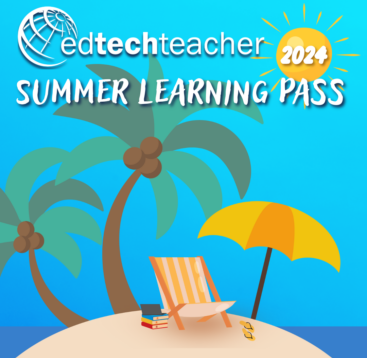Kristen started out by having 2 iPads with her elementary students. She focused on sight words and did a formalized research study to prove their value for teaching and learning. Her classroom is based on the idea of “open concept” – there are no walls. Two combined grades work together and collide into the library. While at first glance, her room may look similar to others, there are key differences.
Difference #1 – students choose their morning activity
When students enter in the morning, they can read, blog, or Tweet. They work independently or in groups wherever they like.
Difference #2 – Community Read
On Tuesdays and Thursdays, the parents are invited in for community read. This time also now includes “let’s teach our parents” opportunities for bringing parents into the connected classroom. In doing this, it has eliminated much of the pushback about what is happening with iPads and technology because the parents have been brought on board to understand the value of devices as an extension of learning.
Difference #3 – less than 20 apps on iPads at all times
Almost all apps on student iPads are for content creation. The students have developed some fluency with them, and can then choose the creation app to best meet their need.
Difference #4 – curiosity
Students are encouraged to wonder, ask, question, and then blog, write, draw, or come up with any other way to express their interests. Creatures are always in the classroom – worms, slugs, frogs, bug catchers, etc – to be able to explore. The wonder is what provides the platform to connect.
Connecting in Literacy
Technology is never pushed onto the students. Some of them choose not to use iPads and others bring their own device. Currently, in making connections with literature, students scan a QR code from a bookmark to go to a TodaysMeet room in order to express their ideas.
Video Conferencing with Skype
Parents are invited in to see Skypes in action. This allows the class to connect with authors or other experts from around the world. Oftentimes, guests are invited in because of connections made on Twitter. Students can grab an iPad at any time and tweet from the class account – as long as an adult proofs it first. For example, recently, they spoke to author, Ame Dyckman.
Twitter in the Classroom
Twitter really serves as the linchpin in Kristen’s classroom and has completely changed the dynamic of her classroom. They aren’t using Twitter to announce what they are doing. They are using it to teach other students. All tweets are authentic from the students. There are “Twitter Norms” for the class that are posted on the walls in the classroom, but Kristen does not edit.
Options for using Twitter in the classroom:
- Wonder Questions – before searching content, students are learning to search people and use it as their information engine.
- Tweet an Author – students make deeper connections with books by tweeting to and with authors.
- Investigations – last year, the students became tadpole experts as they tweeted about their tadpoles and other students began asking questions. In the process, a class from Singapore saw the tweets and had the same thing happening in their room. However, since their tadpoles were a stage ahead, the classes collaborated to teach each other.
- Experiments – do pumpkins float or sink? Students create experiments and connect to other classes to find out. This was a project idea from Projects By Jen. From there, they did an estimation of the number of seeds as well as an exploration of pumpkin or gourd. Real life problems happen within the context of a broader learning community of kids asking kids.
iPad Stations
Whether you have 1 iPad in your class, or are 1:1, Kristen recommends using iPad Stations for students to create. For each one, she creates printed out directions for the students to follow in order to work independently. For one of their fluency stations, students record their reading fluency with AudioBoo and then put QR codes to the audio links in the books so that students can listen to other students reading.
One option with iPad Stations is the students have the option to blog their learning. Kristen has even created a blogging community for K-4 classrooms similar to QuadBlogging. When Kristen first started blogging with students, it was all locked down so that no one could see what the students were doing. However, students didn’t find any interest in the blogs because there weren’t any comments. By creating a community, the students are now really excited about posting all of their learning objects.
Connecting with Writing
One new writing activity that Kristen has been doing is to incorporate Chirp. She pushes out links, pictures, or text and has the students respond via TodaysMeet, Padlet, or any other tool.
Popplet is another tool for writing. Kristen pushes out pictures and then has students generate ideas in a different way.
Global Community iBook
Every year, Kristen creates a project and invites other classes to join in. This year, they are using Book Creator to create a global community book. Check out the video that her students made about the project.
What’s really amazing as the students came up with the idea for this book based on Kristen’s question of “What should we do?”
Connected Math
Kristen uses a lot of Explain Everything in math. When they finish what they are working on, they go to Twitter. Even if it’s taking a screen capture from another app such as Number Pieces, they will continue their learning on Twitter by sharing out what they created. For younger students, they also use Draw & Tell to do math stories and share by Twitter.
How do we get students connected? – Kristen explains to start by being a connected educator and build a community through Twitter and blogs. Other options are to use ePals or Skype in the Classroom.


